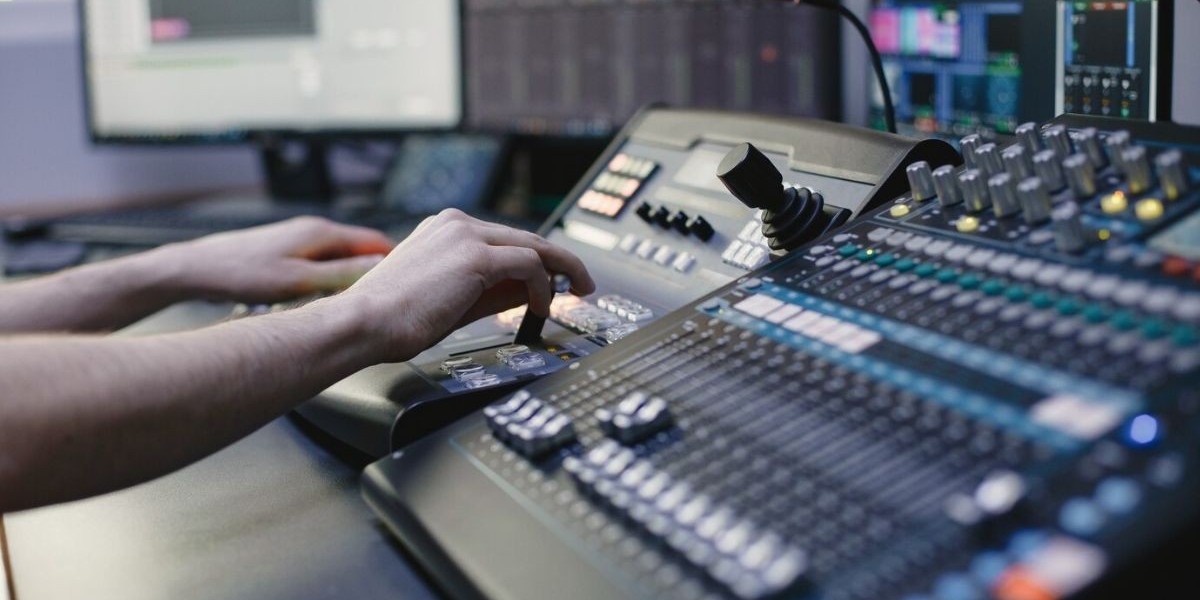Sound engineering is the art and science of capturing, mixing, and reproducing sound in the most effective way. It plays a key role in music production, film, radio, television, live concerts, and even simple YouTube videos. Though the term may sound technical, the basic principles behind sound engineering are quite easy to understand, especially for someone curious about how sound works in everyday life. Many aspiring professionals start by exploring beginner-friendly sound engineering courses in Kerala, where foundational skills are taught in a hands-on, accessible manner.
Let’s explore the core concepts of sound engineering in a simple, clear, and beginner-friendly way.
What is Sound Engineering?
Sound engineering involves the technical process of working with audio. A sound engineer, also called an audio engineer, uses various tools and techniques to record, edit, mix, and reproduce sound. The goal is to make the sound clear, balanced, and enjoyable to hear.
For example, when you hear a song where the vocals are crisp, the beats are thumping, and everything feels perfectly blended—that's the result of sound engineering.
How Sound Works
To understand sound engineering, it’s important to first understand how sound works. Sound is a vibration that travels through air (or other materials) and reaches our ears. These vibrations are converted by our ears into signals that the brain interprets as sound.
The two basic properties of sound are:
Frequency: This is how fast the sound waves are vibrating. It determines pitch—whether a sound is high like a whistle or low like a drum.
Amplitude: This is the height of the sound waves. It affects loudness. A larger amplitude means a louder sound.
Main Areas of Sound Engineering
Sound engineering can be divided into several areas, each focusing on different types of work:
1. Recording
This is the first step in sound production. It involves capturing sound using microphones and recording devices. Whether it’s a singer, a guitar, or natural sounds like birds chirping, the recording process must be clean and clear.
2. Mixing
Once all sounds are recorded, they are combined into a final track. This is called mixing. A sound engineer adjusts volume levels, adds effects (like echo or reverb), balances instruments and vocals, and ensures everything sounds pleasant together.
3. Mastering
This is the final polish. Mastering prepares the audio for distribution by making it sound consistent across all devices like phones, TVs, and speakers.
4. Live Sound
This area involves managing audio during live performances like concerts or public events. Engineers control the sound in real-time using mixers and ensure that every part of the venue has clear audio.
Essential Equipment Used in Sound Engineering
Here’s a quick look at some of the common tools:
Microphones: These capture sound. Different microphones are used depending on what needs to be recorded.
Audio Interface: A device that connects microphones and instruments to a computer.
Mixing Console: A board with knobs and sliders used to adjust volume and effects for each sound source.
Digital Audio Workstation (DAW): A computer program used for recording, editing, and mixing audio.
Speakers and Headphones: These are used to listen to the sound accurately while working on it.
Key Concepts Every Beginner Should Know
1. Gain vs Volume
Many people confuse gain and volume. Gain controls how much signal goes into a device. Volume controls how much comes out. Too much gain can cause distortion, while too little can make the sound weak.
2. Equalization (EQ)
EQ is used to adjust the balance of frequencies. For example, if a vocal track sounds too sharp or too dull, EQ helps smooth it out by boosting or reducing specific frequencies.
3. Compression
A compressor reduces the difference between the loudest and quietest parts of a sound. This helps keep the audio level consistent and avoids sudden jumps in volume.
4. Panning
Panning places sound in the stereo field—left, right, or center. It’s how a mix can feel wide and immersive, like the guitar coming from one side and the vocals from the middle.
Understanding Acoustics
Acoustics is the study of how sound behaves in a space. The room where sound is recorded or played can change how it feels. For example, a small room with hard walls may cause echo, while a padded studio absorbs sound for clarity. That’s why sound engineers carefully choose or treat rooms for the best results.
Why Sound Engineering Matters
Whether you’re listening to music, watching a movie, or attending a live concert, good sound makes all the difference. Poor sound can ruin the experience, no matter how good the performance is. Sound engineers make sure that every detail—every note, every beat, every word—is heard exactly as it should be.
They are behind the scenes, but their work is what gives sound its power to move, inspire, and entertain.
Getting Started with Sound Engineering
If you’re interested in trying sound engineering, here are a few simple tips:
Start with basic recording apps and simple microphones.
Learn to listen carefully—notice how professional tracks are mixed.
Explore beginner-friendly DAWs to practice editing and mixing.
Experiment with your own voice or instruments to understand how sound behaves.
Don’t be afraid to make mistakes—every engineer learns by doing.
Today, there are many learning paths available. If you're located in a metro city, several recognized sound engineering courses in Bangalore provide excellent hands-on experience, ideal for those wanting to pursue a career in audio.
Conclusion
Sound engineering may seem technical at first, but its foundation is built on listening, creativity, and practice. With a little curiosity and patience, anyone can start to understand and enjoy the process. Whether you want to make music, edit podcasts, or simply improve your audio skills, learning the core concepts of sound engineering is a rewarding and exciting journey.








